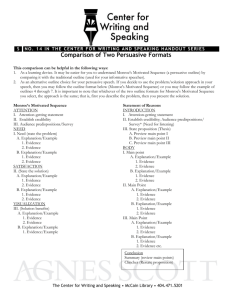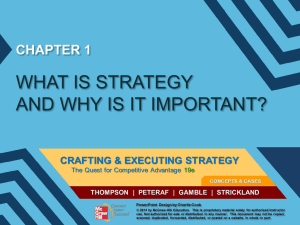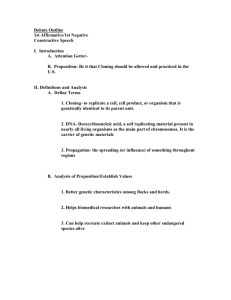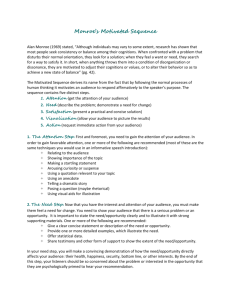Monroe's Motivated Sequence
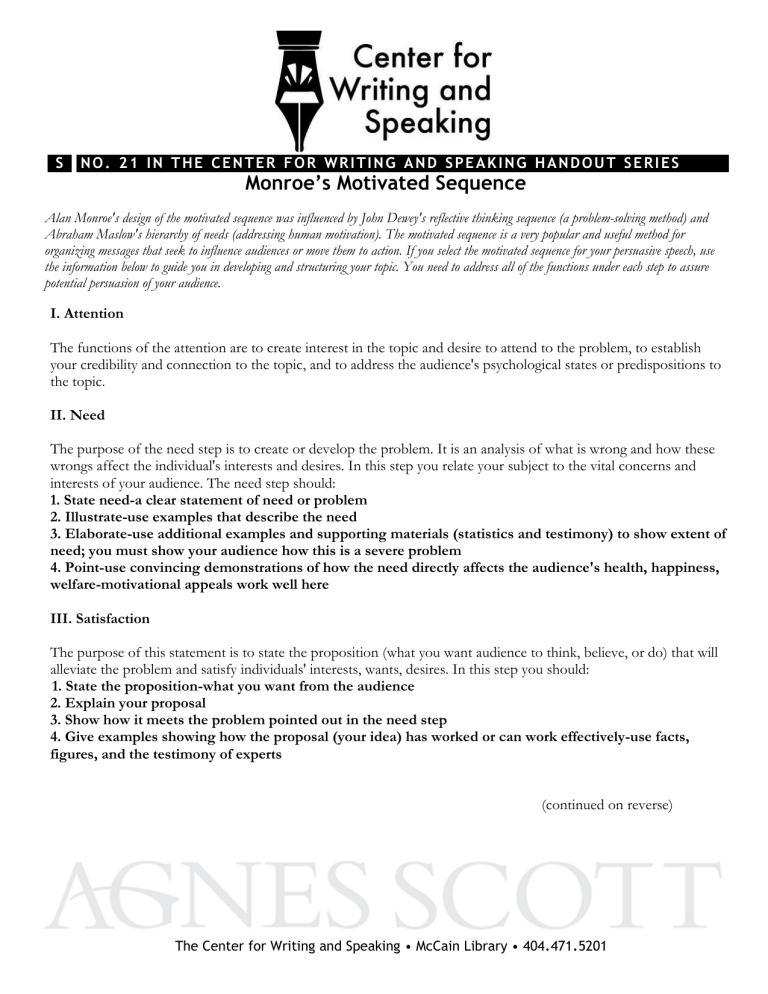
S N O . 2 1 I N T H E C E N T E R F O R W R I T I N G A N D S P E A K I N G H A N D O U T S E R I E S
Monroe’s Motivated Sequence
Alan Monroe's design of the motivated sequence was influenced by John Dewey's reflective thinking sequence (a problem-solving method) and
Abraham Maslow's hierarchy of needs (addressing human motivation). The motivated sequence is a very popular and useful method for organizing messages that seek to influence audiences or move them to action. If you select the motivated sequence for your persuasive speech, use the information below to guide you in developing and structuring your topic. You need to address all of the functions under each step to assure potential persuasion of your audience.
I. Attention
The functions of the attention are to create interest in the topic and desire to attend to the problem, to establish your credibility and connection to the topic, and to address the audience's psychological states or predispositions to the topic.
II. Need
The purpose of the need step is to create or develop the problem. It is an analysis of what is wrong and how these wrongs affect the individual's interests and desires. In this step you relate your subject to the vital concerns and interests of your audience. The need step should:
1. State need-a clear statement of need or problem
2. Illustrate-use examples that describe the need
3. Elaborate-use additional examples and supporting materials (statistics and testimony) to show extent of need; you must show your audience how this is a severe problem
4. Point-use convincing demonstrations of how the need directly affects the audience's health, happiness, welfare-motivational appeals work well here
III. Satisfaction
The purpose of this statement is to state the proposition (what you want audience to think, believe, or do) that will alleviate the problem and satisfy individuals' interests, wants, desires. In this step you should:
1. State the proposition-what you want from the audience
2. Explain your proposal
3. Show how it meets the problem pointed out in the need step
4. Give examples showing how the proposal (your idea) has worked or can work effectively-use facts, figures, and the testimony of experts
(continued on reverse)
The Center for Writing and Speaking • McCain Library • 404 .
471 .
5201
S N O . 2 1 I N T H E C E N T E R F O R W R I T I N G A N D S P E A K I N G H A N D O U T S E R I E S
Monroe’s Motivated Sequence, Continued
IV. Visualization
The function of the visualization step is to intensify desire and seek belief or action from your audience. To accomplish this you need to project into the future and describe the results of your solution (the satisfaction step).
The visualization step should describe:
1. Vividly what the world would look like and/or feel like if the proposition was believed or followed.
Or
2. What the world would look like if the proposition was not believed or followed. You must state the benefits of the proposition; it is optional to describe the dangers of not accepting the proposition.
V. Action
This step is a final call for commitment or a call to action. As in the conclusion of an informative speech, you should restate the proposition or thesis and end with a clincher-type statement. The action step may use one or more of the following devices:
1. Challenge or appeal
2. Quotation
3. Illustration
4. Summary of proposition
5. Steps to achieving proposition
The Center for Writing and Speaking • McCain Library • 404 .
471 .
5201

